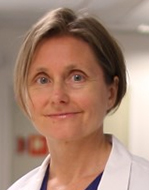Research Shows Connection Between Radiology Reading Volume and False-Positive Rates in Mammography
Researchers analyze a decade of data from the BreastScreen Norway database

A recent Radiology study demonstrates that an annual reading volume of 4,000 to 10,000 mammograms may be the most optimal to keep radiologists at peak reading performance.
Researchers also determined that a radiologist’s false-positive rate, and therefore specificity, is greatly impacted by experience and annual volumes.
“The findings from our study can be used to help radiologists organize mammography screening programs in an effective way,” said lead author Solveig Roth Hoff, PhD, a researcher at Ålesund Hospital, Møre og Romsdal Hospital Trust in Norway and an associate professor at the Norwegian University of Science and Technology. “It can also bring a focus to the working conditions for the readers, ensuring an optimal workload.”
While several European screening mammography programs recommend an annual minimum reading volume of 5,000 mammograms per radiologist, those recommendations have been based on expert opinion versus published data for screening programs, which incorporate independent double reading and consensus.
“The most exciting part of the project was the opportunity to use such a large collection of data, making it possible to draw valid conclusions,” Dr. Roth Hoff said.
Study Comprises Over Two Million Readings
The researchers examined data from digital mammographic examinations obtained from 2006 to 2016 in the BreastScreen Norway database. The data comprised a total of 2,373,433 readings performed by 121 radiologists. Researchers used multi-level mixed-effects models to explore how sensitivity, cancer detection rate and false-positive rate before and after consensus were associated with both annual and cumulative reading volume.
Dr. Roth Hoff’s team determined that the false-positive rate was lower at higher reading volumes, decreasing from 5.3% at 100 annual readings to 4% at 4,000 annual readings. For cumulative readings — the total number of mammography readings for each radiologist during the course of the study — the false-positive rate was 6.7% at 500 cumulative readings and 3.6% at 20,000 cumulative readings.
The researchers concluded that annual volumes between 4,000 and 10,000 mammograms and cumulative volumes greater than 20,000 were the most optimal for achieving high reading performance.
Sensitivity and screening-detected breast cancer rate remained relatively stable, achieving 87% to 90% and 4.9 to 4.7 per 1,000 readings, respectively, between 100 and 10,000 annual readings, and 88% to 89% and 4.8 to 4.9 per 1,000 readings between 500 and 100,000 cumulative readings.
“We were surprised to find that the ability to detect cancers in a mammogram dropped with increasing yearly volumes above 10,000,” Dr. Roth Hoff said. “We believe that this can be caused by a workload that is too high for some radiologists, resulting in fatigue.”
Consensus Review May Be Valuable
The authors suggested that for readings that were initially positive, incorporating a consensus review into practice may help reduce false-positive rates.
“Increasing experience in reading mammograms leads to a higher ability to recognize normal mammograms, thereby reducing the number of false positives,” Dr. Roth Hoff said. “Consensus meetings can further lower the number of false positives and are an important learning arena where less experienced radiologists have the ability to discuss their findings with more experienced colleagues, thereby improving their specificity.”
“Women who are recalled for follow-up examinations after a positive mammogram often tell me that the waiting time before the recall appointment is difficult because they are scared of having breast cancer,” Dr. Roth Hoff said. “It is therefore important to keep the number of false positives as low as possible."
This is also important from a cost effectiveness standpoint, since a lower number of false positives reduces the costs of the screening program, she said.
For Your Information
Access the Radiology study, Influence of Mammography Volume on Radiologists’ Performance: Results from BreastScreen Norway.